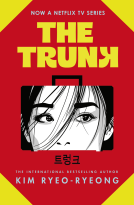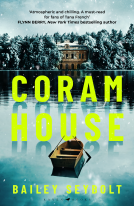
The Church and the Dark Ages (430–1027)
St. Benedict, Charlemagne, and the Rise of Christendom
by Phillip Campbell
This title was previously available on NetGalley and is now archived.
Send NetGalley books directly to your Kindle or Kindle app
1
To read on a Kindle or Kindle app, please add kindle@netgalley.com as an approved email address to receive files in your Amazon account. Click here for step-by-step instructions.
2
Also find your Kindle email address within your Amazon account, and enter it here.
Pub Date 17 Dec 2021 | Archive Date 14 Jan 2022
Talking about this book? Use #TheChurchandtheDarkAges4301027 #NetGalley. More hashtag tips!
Description
What if the Dark Ages weren’t really dark after all?
You may have learned in world history class that the fall of the Roman Empire led to centuries of violence, ignorance, and barbarism in Europe. But that’s not all that happened during that time! The period between the fall of the Roman Empire and the High Middle Ages also was characterized by institutional, spiritual, and cultural advancements such as the rise of monasticism with St. Benedict of Nursia and the first encyclopedia by a Christian writer, St. Isidore of Seville.
In The Church and the Dark Ages (430-1027), author Phillip Campbell explains that the Dark Ages were not only a period of great political and cultural transition but also an era of great transformation in the Catholic Church. Campbell highlights key personalities of the Dark Ages such as St. Gregory the Great, Charlemagne, King Alfred the Great, St. Patrick, and St. Brigid.
You will learn that:
· Benedictines were responsible for technical and scientific advancements such as the mechanical clock, human flight, and eyeglasses.
· The Dark Ages was a period of great evangelization throughout Europe.
· Christianity elevated the status of women, particularly through mutual consent in the Sacrament of Marriage.
· The Church preserved literacy—and literature—throughout the chaotic centuries of early medieval Europe.
Books in the Reclaiming Catholic History series, edited by Mike Aquilina and written by leading authors and historians, bring Church history to life, debunking the myths one era at a time.
A Note From the Publisher
Campbell has a bachelor’s degree in European history from Ave Maria University and a certificate in secondary education from Madonna University. Campbell has appeared on EWTN television, Ave Maria Radio, Radio Maria, Good Shepherd Catholic Radio, Mater Dei Radio, and on the Crawford Broadcasting Network.
Advance Praise
“The so-called Dark Ages engenders images of a bloody, barbaric, and illiterate age without the light of civilization and progress. The Church and the Dark Ages (430–1027) refutes this erroneous notion, illustrating a time period of monasteries, missionaries, reform, and renewal. Phillip Campbell’s worthy addition to the Reclaiming Catholic History series presents the five hundred years from the end of the classical age to the beginnings of the high Middle Ages in a compelling and positive light. The story of the Church is expertly told in an engaging manner and is a necessary addition to every Catholic home.”
Steve Weidenkopf
Author of The Church and the Middle Ages (100–1378)
“The Reclaiming Catholic History series is a boon and a blessing. It allows us to remember the past in an age of amnesia. Philip Campbell’s volume in this splendid series on the so-called Dark Ages shows us that they were anything but dark, but were instead the very dawn of Christendom, heralding the civilization of the Risen Son.”
Joseph Pearce
Editor of St. Austin Review
“Engaging, instructive, and eminently enjoyable. Phillip Campbell sheds a bright light on the Dark Ages, exposing many of the myths that still cling to the centuries following the fall of the Western Roman Empire. From the death of St. Augustine in 430 to the peace of God established by the Synod of Elne in 1027, the ages were not as dark as commonly believed, and it was the Church who carried the light, above all in the hands of her saints.”
John P. Joy
Senior theologian to Most Rev. Donald Hying, bishop of Madison
“Read this book to gain a greater awareness of the pivotal role the Catholic Church played in spiritually bridging the challenging yet eternally productive span of time between the fall of Rome and the intellectually enriching Middle Ages. Then share it with your students. After all, it was during this key stretch of human history that heroically sanctifying figures oriented our gaze ever heavenward.”
Justin McClain
Catholic author and teacher
Available Editions
| EDITION | Paperback |
| ISBN | 9781646800353 |
| PRICE | US$17.95 (USD) |
Featured Reviews
 Carol W, Media/Journalist
Carol W, Media/Journalist
"The farther backward you can look, the farther forward you are likely to see."
-Winston Churchill
This series is an excellent aid to understanding the past and thereby deepening our understanding of the present. It provides a summary of the transitional and transformative era from 430-1027. The author begins with an explanation of the label, 'Dark Ages,' and proceeds to organize a complex era from the fall of the Roman Empire to the flourishing of the High Middle Ages. His organization is superb, fitting together such diverse topics as Gauls and Goths, monasteries and their reform, heresies and their effects, East-West controversies, and Lay Investiture. He explores the conflicts between Secular governments and the Church authority, which will influence and underlie future events. He outlines the development of the sacraments including Penance, Eucharist, and Marriage. He intersperses "Up Close and Personal' sections, which go into some detail about influential characters of the era, some well-known like St. Benedict and St. Gregory the Great, along with lesser-known people like St. Paschasius and St Berno. He also adds "You Be the Judge" evaluations where he asks and explores popular questions like: "Do the bad popes disprove papal infallibility?" His explanations are good, fairly complete with documentation and references, and respectful of student's abilities to question what they read and hear from peers. I found this author more appealing than Anne Carroll's Christ the King Lord of History. I appreciated that he could include both sides of a controversy and not totally dismiss human faults within the Church. His organization and explanations are clear. His bibliography would be a good starting point for further studies on various topics and enable students to read primary sources, but use his book as a 'spine' for organizing their studies. This would work well for homeschool students as well as for private schools.
 Janet P, Reviewer
Janet P, Reviewer
An excellent book about an era in history that is largely ignored, Important historical events are not ignored and the book makes good sense of the political currents of the period while not ignoring the changes and developments in the Church. It's one of the best in the series so far.
 Reviewer 451445
Reviewer 451445
While this isn't solely a book about scientific advancement in the so called Dark Ages that is nonetheless my main take from it. Uninformed atheists and secularists will tell you that the Dark Ages was the period when the Church supressed science and advancement. Books like this help to answer this and show that this was a period when the Church was actually at the forefront of maintaining and developing advancement on many levels. Recommended.
Thanks to NetGalley and AveMaria Press for ARC.
 Michelle K, Reviewer
Michelle K, Reviewer
The Church and the Dark Ages ( 430–1027 )
430–1027
St. Benedict, Charlemagne, and the Rise of Christendom
by Phillip Campbell
03 Dec 2021 |
Ave Maria Press
Christian | History | Religion & Spirituality
I am reviewing a copy of The Church and the Dark Ages (430-1027) through Ave Maria Press and Netgalley;
In School we learn about the fall of the Roman Empire and the impact it had on society but The Church and the Dark Ages goes well beyond that, this book shows us how Benedictines were responsible for technical and scientific advancements such as the mechanical clock, human flight, and eyeglasses. We learn too that throughout Europe in the Middle Age, great Evangelization was taking place, and how Christianity elevated the status of women, particularly through mutual consent in the Sacrament of Marriage.
·The Church preserved literacy—and literature—throughout the chaotic centuries of early medieval Europe.
The Church and The Dark Ages speaks of the grown of the Catholic Church in the middle age, and how it exploded to become a super power amongst those in Europe as well as other regions.
I give The Church and the Dark Ages five out of five stars!
Happy Reading!
 Librarian 431790
Librarian 431790
The so called Dark Ages are usually considered a barbaric age but they are fundamental in the construction of the world we are living in.
It's the age of Benedict, Augustinus, Gregorius and Charle Magne. I don't always agree with the author but I appreciated this well researched book as it's well written and compelling.
An interesting book if you want to learn about the seminal ages of Catholic Church in the West.
Highly recommended.
Many thanks to the publisher and Netgalley for this ARC, all opinions are mine
 Susan I, Reviewer
Susan I, Reviewer
A fascinating glimpse into the history of the Catholic Church during the so-called Dark Ages. Part of a series on the history of Catholicism, this book is an easy and enjoyable read. I do wish I’d started from the beginning of the series. Highly recommended for anyone interested in Catholicism or more generally In history, #TheChurchandtheDarkAges4301027 #NetGalley
Readers who liked this book also liked:
Rick Riordan; Mark Oshiro
Children's Fiction, LGBTQIA, Teens & YA
Keith Martin; Konstantinos Mersinas; Guido Schmitz; Jassim Happa
Business, Leadership, Finance, Computers & Technology, Reference


















